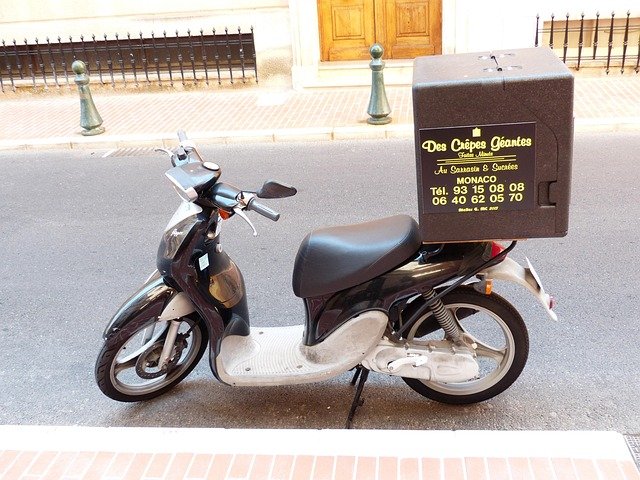What Makes Delivery Jobs Remarkable: Human Interaction, Dynamic Routes, and the Rhythm Behind Every Day
Delivery work blends structured routines with constant movement, creating a setting where tasks stay clear while each day brings new encounters. The role naturally involves communication with people — from brief exchanges with customers to small moments of appreciation that can make the route feel more personal. Many couriers note how navigating different districts, discovering new corners of a city, and adapting to varied surroundings adds a sense of motion that keeps the work engaging. Along the way, occasional gestures of gratitude, flexible route experiences, and the balance between independence and interaction reveal why this field feels both organized and surprisingly lively.

Couriers and delivery drivers spend their working hours in motion, navigating streets, apartment blocks, and office corridors. Each drop-off is a short encounter, each route a changing puzzle. Rather than sitting in a single location, this type of work unfolds across neighbourhoods and districts, creating a daily rhythm that is both structured and surprisingly varied.
Human interaction along delivery routes
Human interaction along delivery routes is one of the elements that can make this work feel meaningful. Couriers and drivers typically meet a wide range of people in a single shift: reception staff, shop owners, security guards, neighbours, and families. Some encounters last only a few seconds, but repeated visits to the same address can turn brief exchanges into familiar routines.
Over time, simple gestures like a friendly greeting or a shared joke can reduce the sense of isolation that might come with working on the move. Even when many parcels are left at doors or lockers, there are still moments that involve handing over important items, checking details, or answering quick questions. These small interactions can give structure to a day that might otherwise be defined only by distance and time.
How city movement adds variety to courier work
How city movement adds variety to courier work is visible in the constant changes that shape each route. Traffic conditions, weather, construction sites, and events all influence how a driver moves through the urban landscape. A route that was simple yesterday may be complicated today by road closures or rush-hour congestion.
This shifting environment can keep the role mentally active. Couriers often adjust their paths on the fly, choosing side streets, altering stops, or reordering deliveries to stay efficient. The city itself becomes a kind of living map, with patterns that gradually become familiar: when certain intersections slow down, which shortcuts save time, and how different districts feel at various times of day.
Moments of appreciation in daily customer contact
There are many moments of appreciation in daily customer contact that stand out amid the routine. A customer relieved to receive a time-sensitive package, a restaurant grateful for a prompt supply delivery, or a neighbour who recognizes the effort on a rainy or very hot day can all create memorable experiences.
These expressions of gratitude may be brief, but they can counterbalance the physical demands of the role. A simple thank you, a smile, or a short conversation can make long routes feel more worthwhile. For some workers, these interactions highlight the impact their efforts have on households and businesses that rely on regular, reliable deliveries to function smoothly.
Balancing independence with people-focused tasks
Balancing independence with people-focused tasks is a key aspect of courier work. Much of the day is spent alone in a vehicle, on a bicycle, or on foot, managing time and planning routes. This independence allows workers to focus on their own pace, concentrate on navigation, and develop personal strategies for staying organised and calm under time pressure.
At the same time, the role remains strongly connected to others. Couriers frequently coordinate with dispatchers, warehouse teams, and customers. They may need to clarify delivery instructions, handle access codes, or manage special handling requirements. The combination of self-directed movement and frequent brief interactions can appeal to people who like working autonomously but still value contact with others.
Dynamic route patterns that shape courier experience
Dynamic route patterns that shape courier experience can vary widely depending on the type of deliveries and the area covered. Some workers follow relatively stable routes, visiting similar streets or companies each day, while others handle constantly changing addresses driven by real-time orders and requests.
In dense city centres, routes may involve many short stops close together, with frequent parking decisions and navigation through busy pedestrian zones. In more spread-out areas, the focus may be on longer drives between addresses and careful planning to minimise backtracking. Over time, these patterns influence how couriers perceive distance, time, and even different neighbourhoods, turning the map of a city into a familiar mental landscape.
The rhythm behind every day on the road
The rhythm behind every day in delivery work emerges from the combination of sorting, loading, driving, and interacting with customers. Mornings might begin with organising parcels and planning the sequence of stops. As the day progresses, there is a flow between quiet periods of travel and bursts of activity at clusters of addresses.
Physical movement, from lifting packages to climbing stairs and walking between buildings, adds another layer to this rhythm. For many, the predictability of certain routines mixed with the unpredictability of traffic and customer needs keeps the work from feeling static. Each completed route provides a clear sense of progress, marked not just by the number of parcels delivered, but by the many brief human encounters and decisions that shaped the journey.
In the end, what makes this kind of role remarkable is not only the logistics, but the constant interplay between people, place, and motion. The work connects homes and businesses, links different parts of a city, and turns everyday streets into pathways of interaction, responsibility, and steady forward movement.




